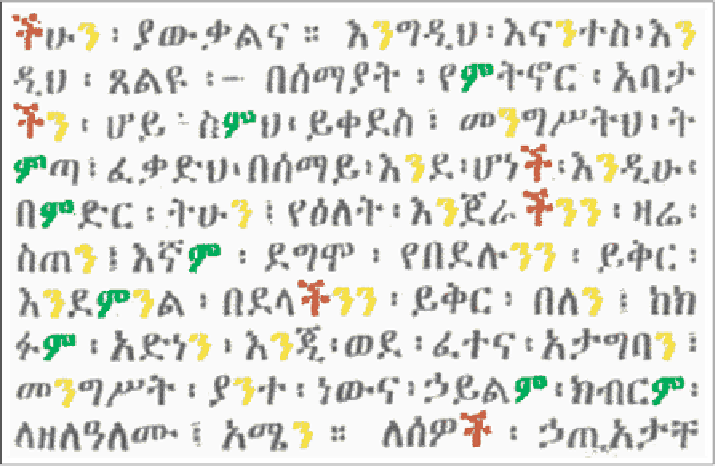Image Processing Reference
In-Depth Information
Fig. 11.10. Recognition of characters in Ethiopian text. The
colors
encode the labels of some
identified target characters
image constancy hypothesis severely. In other words, if the image gray tones repre-
senting the same pattern differ nonlinearly and significantly between the reference
and the test image, then a good precision or a convergence may not be achieved.
An early exception to the “rotate and correlate” approach is the pattern recog-
nition school initiated by Hu [112], who suggested the moment-invariant signatures
to be computed on the original image, which was assumed to be real-valued. Later,
Reddi [188] suggested the magnitudes of complex moments to efficiently implement
the moment invariants of the spatial image, mechanizing the derivation of them. The
complex moments contain the rotation angle information directly encoded in their
arguments as was shown in [25]. An advantage they offer is a simple separation of
the direction parameter from the model evidence, i.e., by taking the magnitudes of
the complex moments one obtains the moment invariants, which represent the evi-
dence. The linear rotation-invariant filters suggested by [51, 228] or the steerable fil-
ters [75,180] are similar to filters implementing complex moments. With appropriate
radial weighting functions, the rotation-invariant filters can be viewed as equivalent
to Reddi's complex moment filters, which in turn are equivalent to filters implement-
ing Hu's geometric invariants. From this viewpoint, the suggestions of [2, 199] are
also related to the computation of complex moments of a gray image, and hence de-
liver correlates of Hu's geometric invariants. Despite their demonstrated advantage
in the context of real images, it is, however, not a trivial matter to model
isocurve
families
embedded in gray images by correlating complex moment filters with gray

